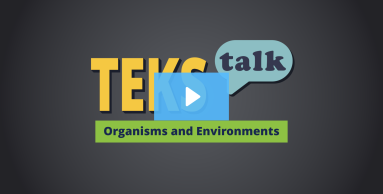- Science
- Grade 3
- Organisms and environments
Science.3.12.D
identify fossils as evidence of past living organisms and environments, including common Texas fossils.

Knowledge and Skills Statement
The further explanation is designed to be a resource for educators that helps them better understand the topic their students are learning. Further explanations may be written at a more complex level than would be expected for students at the grade level.
Fossils provide evidence about the types of organisms (both macroscopic and microscopic) that lived long ago and also about the nature of their environments. Fossils can be compared with one another and to living organisms according to their similarities and differences.
Research
Royce, Christine Anne. 2004.“Teaching through Trade Books.” Science and Children 42, no. 2 (October 2004): 22–24. http://www.jstor.org/stable/43173705.
Summary: Teachers can use children’s books to help teach students how scientists use fossils, including those found in Texas, to interpret plants and animals of the past. In this article, students need to start to understand what is considered evidence and how that evidence can be used to make explanations. The article outlines an activity for elementary students to help them understand how scientists use fossils to determine things about the past. Teachers should start by clarifying common misconceptions students have about fossils and animals that existed long ago. Students collect items such as twigs and leaves and use them to create casts and molds. Students can swap casts with others in their class and use their observation skills to try to determine what item the cast was made from.
